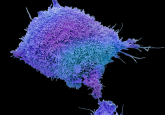Research shows the influence of different biologic cues on cancer cell movement
New research led by scientists from Yale University (CT, USA) has created one of the most advanced data sets to date on the complex signaling networks controlling migration in highly invasive cancer cells. The research was recently published in the journal Nature Communications.
Cancer cells often encounter contradictory cues in complex tissues and this research describes the ways breast cancer cells respond to chemical cues in humans. The aim of the research was to discover which of these cues causes dispersal and metastasis of cancerous cells, how different cues combine during invasion and which cues are followed when there are conflicting signals.
The team investigated protein cues from EGF as well as a cue that controls the poorly understood phenomenon of contact inhibition of locomotion (CIL).They discovered that when EGF and CIL signals act upon a breast cancer cell simultaneously, the cell makes a decision about which cue dominates. When encountering a weak EGF cue, a breast cancer cell can alter its course if it encounters another cell. However if the EGF cue is strong enough, the two cells will migrate together.
The research team were able to unravel the molecular network that enables cells to follow these cues and to make appropriate decisions. It was discovered that ephrin proteins were critical in this process of mediating the CIL cue. These proteins enabled cancerous cells to repel each other, whilst ignoring other cells. Upon this discovery, the team suppressed CIL to allow weak EGF inputs to facilitate coordinated movements of many cells.
“We have shown that migrating cells prioritize certain cues in the presence of others and thus can switch their migration mode, depending on what they see from the environment,” explained first author Benjamin Lin (Yale University).
It is hoped that increased understanding of the interplay between these signals could help researchers devise novel strategies that could interfere with mobile cancerous cells, potentially decreasing the speed of metastasis. The use of advanced technology is bringing experiments such as this much closer to reproducing a more realistic, biological environment.
“Scientists have studied quite well how individual cues affect cell migration. But in reality, cells are subject to multiple cues at the same time,” commented coauthor Takanari Inoue of Johns Hopkins University (MD, USA). “Our work is significant because we clearly demonstrated that cells do integrate multiple pieces of information and that the integration occurs at a place fairly upstream of the signal processing. I think we have been underestimating these cells’ capability to integrate different cues.”
Source: Yale University news release




